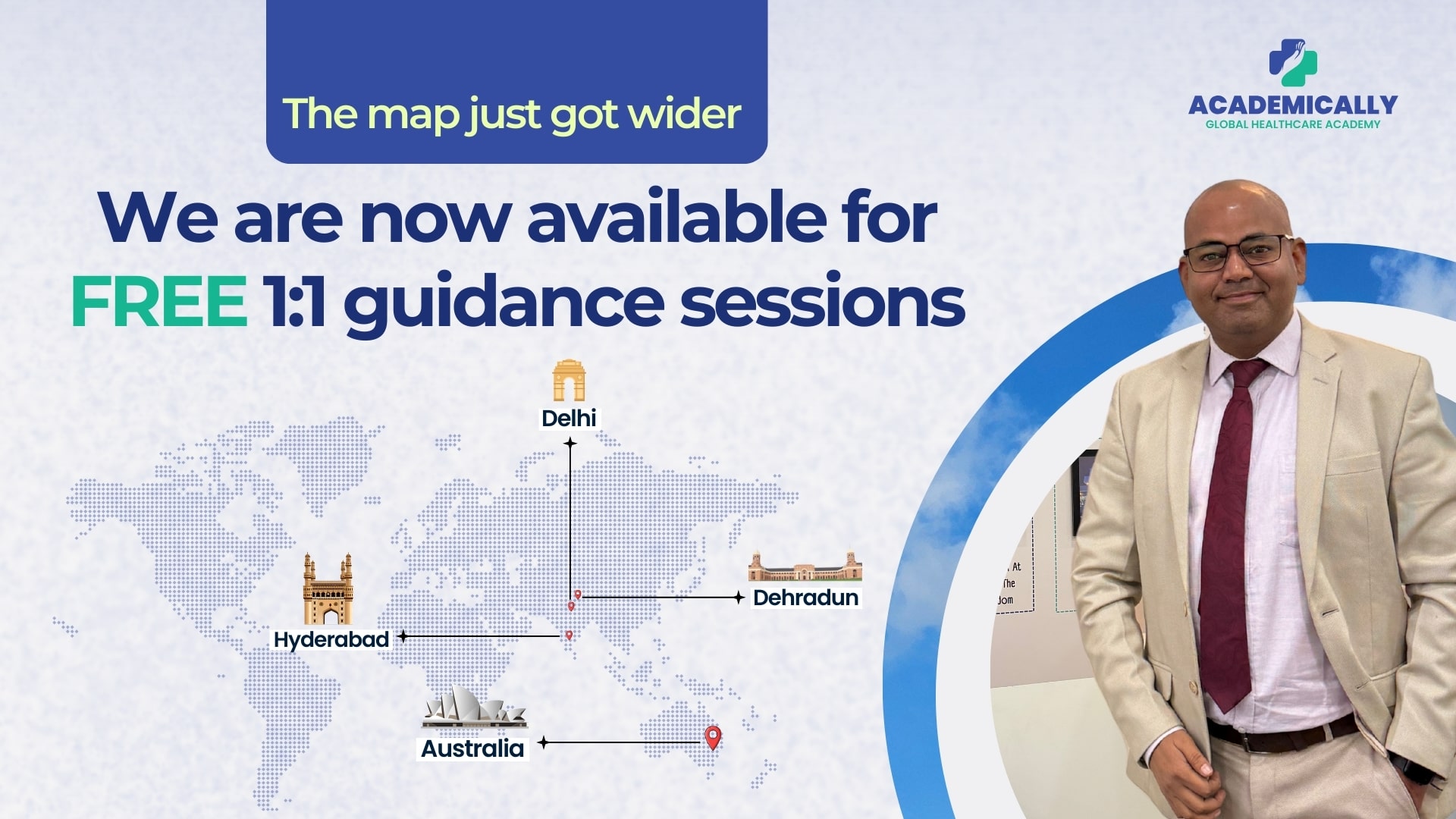Did you know… a survey report indicates that Saudi Arabia plans to recruit ~175,000 healthcare professionals by 2030. It includes around 42,000 allied health workers, a significant group that encompasses physiotherapists. This is part of Vision 2030’s health transformation coverage, which has seen significant growth over the last two years. The Ministry of Health and Vision 2030 programmes continue to expand capacity (new hospitals, specialised centers, workforce growth) backed by regular annual statistical yearbooks and transformation reports. Why does it matter? The coverage expansion, private sector participation, and population health needs mean physiotherapy jobs in Saudi Arabia are set to rise through 2025. In this blog, we will navigate through potential job opportunities that you can get as a physiotherapist in Saudi Arabia.
What exactly is changing in 2025?
Saudi Arabia’s health sector is transforming fast: more private operators, PPP projects, and digital health adoption. That means more rehab beds, specialty clinics, and allied health roles, including physiotherapy.
- Privatisation & PPPs: A growing pipeline of PPP projects and the broader privatization program are unlocking hospital and diagnostic assets, catalyzing private investment and creating new hiring lanes beyond public hospitals.
- Coverage & capacity: Health coverage rose markedly from 2019 to 2023, with ongoing investments in specialised centers and workforce expansion outlined in official reports and peer-reviewed analyses.
Quotas for Saudi nationals are tightening in multiple sectors, including healthcare. For foreign physiotherapists, this doesn’t end opportunities. But it does increase the premium on niche skills, post-graduate credentials, and demonstrable outcomes.
Where are the physiotherapy jobs in Saudi Arabia coming from?
Hiring demand clusters around Riyadh, Jeddah, and Dammam/Khobar, expanding into Tier-2 cities as private providers spread. The largest growth areas are in MSK, sports medicine, neuro-rehabilitation, women’s health, and post-operative care.
What’s driving the roles:
- MSK & Spine clinics: Rising lifestyle and ergonomic issues; more day-surgery procedures needing structured post-op rehab.
- Sports medicine: The growth of community sports, elite leagues, and fitness culture has led to an increasing demand for physiotherapists with expertise in dry needling, manual therapy, and return-to-play protocols.
- Neuro-rehab & Stroke programs: More tertiary centers and long-term care units with robotic rehab and multidisciplinary teams.
- Women’s health pelvic floor services: Underserved niche with strong patient demand in major cities.
- Cardio-pulmonary rehab: Integrated pathways after cardiac interventions and critical care.
- Home-health & community rehab: Insurance inclusion and aging populations broaden out-patient and home-visit models.
Physiotherapist Salary range in 2025 in Saudi Arabia
| City | Annual Range (SAR) | Annual Range (USD) | Annual Range (INR) |
| Riyadh | 126,000 – 221,000 | $34,020 – $59,670 | ₹2,772,000 – ₹4,862,000 |
| Jeddah | 101,000 – 177,000 | $27,270 – $47,790 | ₹2,222,000 – ₹3,894,000 |
| National baseline (mixed) | 58,000 – 155,000 | $15,660 – $41,850 | ₹1,276,000 – ₹3,410,000 |
Tip: Applicants with Saudi Board–linked training, recognized fellowships (e.g., OMT, Sports), or niche skills (women’s health, neuro, dry needling, lymphatic therapy) often negotiate upper-quartile packages—especially if they can show measurable outcomes (ROM gains, patient-reported scores, return-to-work days saved).
How to get your Saudi physiotherapy license (step-by-step)
Step 1: Prepare Your Documents
Gather the following before starting:
- BPT/DPT or MPT/MS degree certificate
- Academic transcripts
- Valid physiotherapy license from your home country
- Work experience letters
- Good Standing Certificate
Step 2: DataFlow Verification
- Upload all documents to the SCFHS DataFlow portal for Primary Source Verification (PSV).
- Processing usually takes 2–3 weeks.
Step 3: Create a Mumaris Plus Account
- Register on Mumaris Plus, the official SCFHS platform for healthcare licensing.
Step 4: Apply for Professional Classification
Two routes depending on your qualification:
- With MPT/MS Degree:
- Apply via the Direct Decision pathway.
- May need to attend an interview (virtual or in-person) with clinical discussions.
- If cleared, you can be licensed without the Prometric exam.
- With BPT/DPT Only:
- Must take the Saudi Prometric Exam.
- Depending on experience, you may first be classified as a Technician.
Step 5: Take the Saudi Prometric Exam (if required)
- Exam format: Computer-Based Test (CBT).
- Conducted at Prometric test centers worldwide.
Step 6: Apply for Professional Registration
- After passing the exam or interview, submit an application through Mumaris Plus.
- You’ll then receive your official SCFHS physiotherapy license.
If you’re planning your move, Academically offers a dedicated Saudi Prometric Exam Preparation Course for Physiotherapists, built around SCFHS blueprints, case-style MCQs, and exam-day strategy.
What is it like for candidates abroad working as physiotherapists?
Sana: 2.5 years exp, MSK clinic, Jeddah
Sana arrived with solid outpatient experience but no niche certification. She targeted private clinics offering return-to-sport programs, highlighted her case logs and outcome measures (e.g., SPADI improvements), and took an OMT module during her notice period. She negotiated a paid CPD plus SAR 162,000 annual with KPI bonuses tied to patient-reported outcomes and care pathway adherence. “The biggest unlock was showing data—not just duties,” she says.
Arjun: 4 years exp, neuro-rehab, Riyadh
Arjun’s edge was stroke rehab with Fugl-Meyer tracking and caregiver education protocols. He pitched a 6-week phased pathway that he helped implement, brought anonymized results (including length-of-stay reductions), and landed a tertiary-center role. His salary started lower than he’d hoped, but with a night differential and on-call allowance, plus a housing allowance, he crossed the SAR 200k mark in his first year.
Hanan: women’s health specialist, Eastern Province
Hanan had pelvic floor certs and a portfolio of patient education handouts in Arabic/English. She won interviews because she could build a service line. She now runs a women’s health schedule, split across antenatal, postnatal, and pelvic pain clinics, mentoring junior staff. Her package includes CPD sponsorship and a pathway to lead therapist.
What clinics actually screen for
- License & category (transparent documentation makes the overall process easy)
- Outcome literacy (use PROMs, ROM, pain scales, return-to-work)
- Communication & consent culture (patient-first mindset in diverse settings)
- Service line thinking (can you build or improve a pathway?)
- Digital readiness (EMR notes, tele-rehab etiquette, remote exercise platforms)
- Team play (OT, SLP, nursing, ortho, neuro, sports med, cardiology)
- Saudisation awareness (mentor Saudi juniors, upskill teams, transfer knowledge)
Pathways & specialties to look out for
- MSK/Orthopedics & Sports: OMT, Mulligan, Maitland, DNS, dry needling, RTP protocols.
- Neuro-rehab: Task-specific training, robotics, balance, vestibular therapy.
- Cardio-pulmonary: ICU mobilisation, post-CABG protocols, endurance metrics.
- Women’s health: Pelvic floor rehab, diastasis programs, obstetric physio.
- Pediatrics: Developmental milestones, CP pathways, family education.
- Geriatrics & LTC: Fall prevention, ADL pathways, caregiver training.
Public vs private job roles as a Physiotherapist
| Factor | Public (MOH) | Private (hospital/clinic/sports) |
| Workload | Higher patient volumes; structured pathways | Variable; opportunity to build niche services |
| Salary mix | Stable base; standardised allowances | Wider ranges; KPI/bonus more common |
| Growth | Clear ladders; academic affiliations | Faster if you own a service line; leadership tracks |
| CPD | Strong for board programs | Often sponsored if linked to ROI |
| Culture | Large MDTs, formal processes | Entrepreneurial, patient-experience focused |
How to build a service line that gets you hired
- Pick a gap.
- Develop a 6-week protocol that includes entry criteria, outcome measures, and home programs.
- Create materials: bilingual handouts, exercise library, and discharge criteria sheet.
- Pilot & measure: track adherence, pain reduction, function gains; present monthly.
- Train others: short in-service sessions for PTs and nurses.
- Tell the story: One slide with patient journey, outcomes, and testimonials.
Things to Avoid while finding a Job as a Physiotherapist in Saudi Arabia
- Incomplete documents → use a document tracker before Mumaris
- Under-estimating PSV timelines → buffer 2–6 weeks; plan your documents accordingly.
- Studying insightful content, not questions → practice case-based MCQs mirroring SCFHS domain weights.
- Ignoring culture & consent → prepare for diverse patient expectations; role-play explanations.
- No outcome evidence → bring anonymised data to interviews.
If you have any further queries, we are always there to help you.




